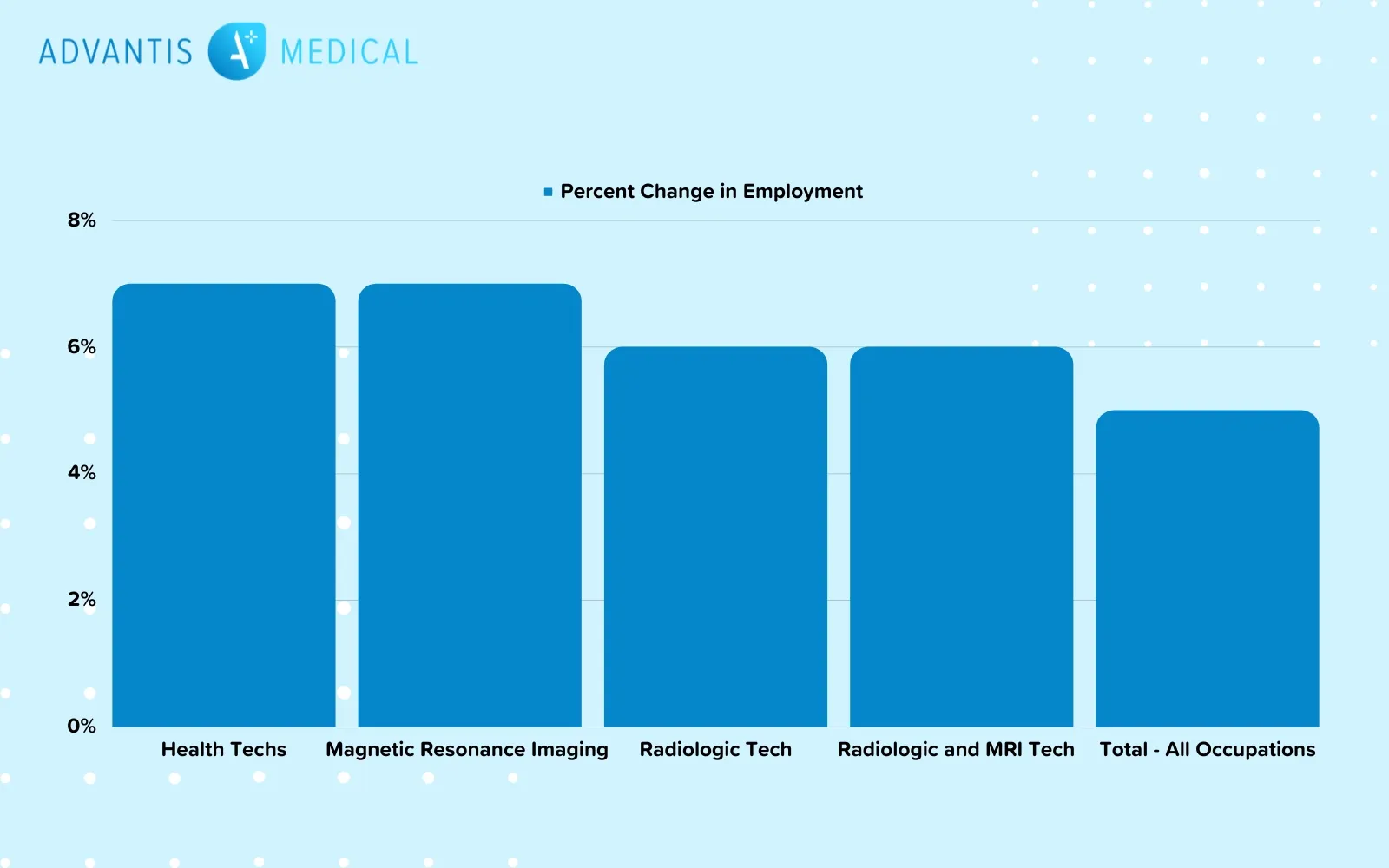Radiologic technologists also known as “rad techs are the third largest healthcare profession outside doctors and nurses. As experts in medical imaging technology, they are integral to diagnosing and treating injuries and illnesses. It’s no surprise then that radiology techs made our list of top-paying allied health jobs, along with several radiology subspecialties.
If you’re wondering how to boost your rad tech salary, our informational guide will cover what factors affect pay rates and areas you can negotiate for the compensation you deserve.
What is a Radiologic Technologist?
Radiologic technologists, “rad techs, or “R.T. are specialists trained in medical imaging equipment. Radiologic technology can be considered an umbrella term for diagnostic imaging with the ability to specialize in different areas, such as:
- Computed tomography
- Mammography
- Cardiac-interventional radiography
- Magnetic resonance imaging
- Sonography
- Nuclear medicine
- Bone densitometry
Responsibilities of rad techs include:
- Explain imaging procedures to patients
- Position patients to capture precise imaging
- Operate medical imaging equipment
- Evaluate images for clarity and accuracy
- Ensure patient safety, specifically against potential radiation exposure
What is The Average Rad Tech Salary in The U.S.?
The Bureau of Labor Statistics (BLS) reports the median annual wage for radiologic and MRI technologists as $61,980. ZipRecruiter quotes a national average rad tech salary of $70,848, or $34.00 per hour, with a broad pay range from $32,000 to $142,000 nationwide. Most rad tech salaries fall between $52,000 and $61,999.
Top 10 highest-paying cities for rad tech salaries
However, just because a town has a higher-than-average salary doesn’t mean pay rates are higher in the rest of the state.
Top five states for high-paying radiologic technologist jobs
- Tennessee – $74,331
- Hawaii – $73,240
- Massachusetts – $72,559
- New Jersey – $72,430
- Nevada – $71,722
Sourced from Ziprecruiter.
To further emphasize how location affects income, consider how the average rad tech salary in Los Angeles, CA is $82,285, yet the average for California as a whole is $63,337. The state of Utah, still located within the Western United States, has a slightly higher annual salary of $64,296, yet with a much lower cost of living than California. In fact, Utah ranks 30th as the most expensive state, while California ranks 49th. Meanwhile, Southern states are notorious for low-paying salaries in healthcare.
Top 5 lowest-paying states for rad tech salaries
- Louisiana – $56,505
- Alabama – $54,017
- Florida – $52,301
- North Carolina – $51,226
- Georgia – $50,646
What Factors Influence a Rad Tech’s Salary?

If changing your location isn’t realistic, experience, job demand, certifications, and work environment also affect pay and offer negotiation opportunities.
1. Job Growth
The Bureau of Labor Statistics (BLS) reports a 6% projected growth for radiologic technologists and technicians. This equals over 16,000 new jobs every year for the next decade. The BLS also predicts that this is because many workers will retire over the next few years or transition from healthcare to another field.
2. Increased Demand
The continuous burden of chronic diseases, coupled with the need for reliable diagnostic imaging to diagnose and treat, equals demand for the field of radiology. Interventional radiology, mammography, and nuclear medicine are just a few specialties requiring more experienced staff to diagnose, treat, and monitor conditions such as heart disease and cancer. The demand for rad techs is in your favor and can be used as leverage when negotiating salaries.
3. Place of Employment
Where you work matters. Some workplaces pay a higher rad tech salaries than others based on the shift, job responsibilities, the level of on-the-job risk, and the patient population. The BLS lists the following as the most populous for radiologic technologists and technicians:
- Hospitals (state, local, and private) – 58%
- Physicians offices – 19%
- Medical and diagnostic laboratories – 7%
- Outpatient care centers – 7%
- Federal government – 3%
Rad techs usually work full-time but may also work part-time or PRN like other medical professionals. Physician offices and outpatient centers will stick to a traditional Monday-Friday work schedule, but rad techs in hospital settings or emergency departments can expect evening, weekend, and on-call shifts. These altered shifts should reflect in your paycheck.
4. Education, Accreditation, and Certification
Radiologic technicians must obtain an Associate’s degree, though most employers prefer a Bachelor’s degree from an accredited radiologic technology program. A certification or licensure is also required in the majority of states in the U.S., which can be obtained through The American Registry of Radiologic Technologists.
As mentioned, specializing in a specific type of imaging, or possessing experience in multiple imaging areas, increases your attractiveness to employers. A rad tech who can float between radiology specialties is an asset to the healthcare team and deserves higher pay.
5. Continuing Education
The American Society of Radiologic Technologists is a professional organization for medical imaging and radiation therapy professionals. Membership shows commitment to the profession, research, and practice standards and provides necessary continuing education for R.T. renewal.
Rad Tech Frequently Asked Questions
How do I become a radiologic technologist?
To become a radiologic technologist, you need at least an Associate’s degree from an accredited program. You must then obtain licensure in the state you plan to practice in.
What’s the difference between a rad tech and a radiologist?
A radiologist is a physician who interprets the tests the rad tech performs.
What is the average rad tech salary?
The average radiologic technologist also known as rad tech’s salary is $70,848, or $34.00 per hour.
Travel Rad Tech Salaries vs. Permanent Staff
According to talent.com, average travel rad techs salaries are around $114,000. Advantis Medical has several travel rad tech jobs with a weekly rate greater than $3,500, which equals $45,500 for a 13-week assignment. Consider this perspective: You’d have to work over half a year to receive the same amount at a permanent position in California and almost an entire year in Georgia.
Are you ready to double your rad tech salary while expanding your skills and seeing the country? Sign up on the AdvantisConnect job portal to connect with your personal recruiter, quickly match with jobs, and explore the benefits traveling can offer.









